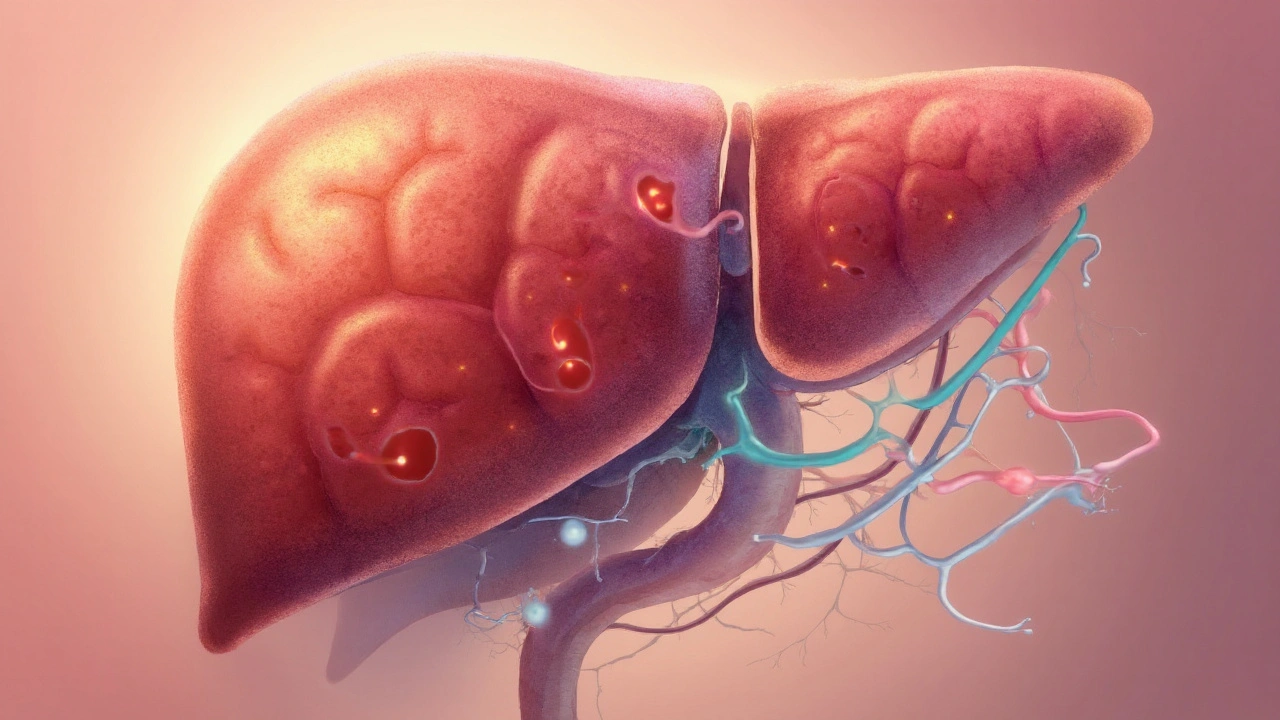Liver Cirrhoshire: What It Is, Why It Happens, and How to Deal With It
If you’ve heard the term “cirrhosis” and feel a little lost, you’re not alone. In plain words, liver cirrhosis means the liver tissue has turned scar‑like and can’t work as it should. The scar tissue builds up over time, often because the liver has been under attack for years.
Why should you care? The liver does a lot for you – it cleans your blood, stores energy, and helps with digestion. When it’s scarred, these jobs get harder and you might start feeling tired, notice swelling, or see changes in your skin. The good news is that knowing the causes and catching symptoms early can slow or even stop the damage.
Common Causes and Risk Factors
Most people get cirrhosis from one of three main culprits:
- Alcohol abuse: Drinking heavily for years is the classic trigger. Even if you think you’re “just having a few drinks,” regular excess can add up.
- Chronic viral hepatitis: Hepatitis B and C infections keep the liver inflamed. If untreated, they can lead to scar tissue.
- Non‑alcoholic fatty liver disease (NAFLD): This shows up when you’re overweight, diabetic, or have high cholesterol. Fat builds up in the liver and eventually causes scarring.
Other factors that can tip the scale include certain medications (like some steroids or methotrexate), genetic conditions, and long‑term exposure to toxins. If any of these ring a bell, it’s worth talking to a doctor.
Spotting Symptoms and Getting Help
Early cirrhosis often feels like nothing at all. As it progresses, you might notice:
- Persistent fatigue or weakness
- Unexplained weight loss
- Yellowing of the skin and eyes (jaundice)
- Swelling in the legs, ankles, or belly (ascites)
- Itchy skin or easy bruising
When you see any of these, don’t wait. A simple blood test, ultrasound, or a more detailed scan can reveal how your liver is doing. Doctors also use something called the “Child‑Pugh score” to see how severe the cirrhosis is and plan treatment.
What can you do right now?
- Cut out alcohol: Even a small amount can keep the liver from healing.
- Follow a liver‑friendly diet: Focus on fruits, veggies, lean proteins, and whole grains. Limit salty foods to keep fluid buildup low.
- Stay active: Light exercise helps control weight and improves overall health.
- Take prescribed meds: If you have hepatitis, antiviral drugs can clear the virus and stop further damage.
- Get regular check‑ups: Monitoring labs and imaging lets doctors catch problems early.
Some people qualify for advanced treatments like liver‑protecting meds (e.g., obeticholic acid) or, in severe cases, a liver transplant. Those options are discussed with specialists after a thorough evaluation.
Bottom line: liver cirrhosis is serious, but it’s not a hopeless sentence. By understanding the main causes, watching for warning signs, and acting fast, you can keep your liver from sliding further downhill. If any of this sounds familiar, reach out to a healthcare provider today and start a plan that works for you.

